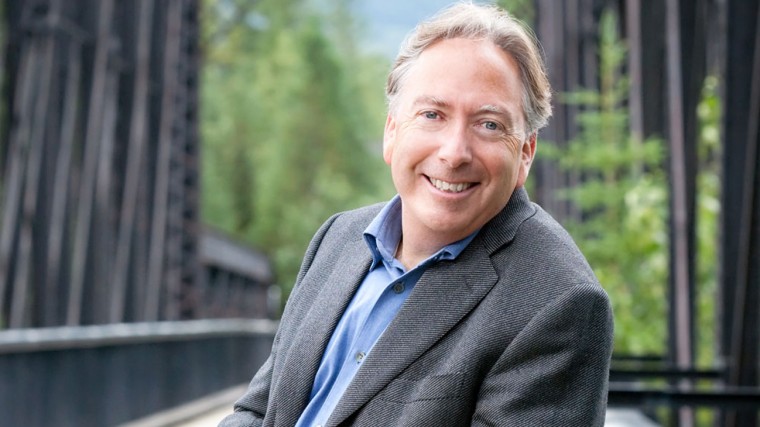Can more funny equal more money? Without question. There truly is a bottom-line advantage to leveraging your humor resources and branding your business with humor. Here are five guiding principles to help you and your business laugh all the way to the bank.
1. First, Do No Wrong
Great advice for doctors or would-be corporate jesters. Make sure the humor you use in your branding laughs with people, not at people. Laugh at yourself, not in a, “I’m a loser” kind of way, but in a way that lets people know you don’t take yourself overly seriously. Stay clear of political, ethnic, gender or sex-based humor. Remember that having permission to use more humor at work is not permission to act like a jerk. It doesn’t give you license to offend or humiliate people, or disparage their character. It’s about being more human, having a bigger heart, and demonstrating greater humility.
The number one fear corporate clients express about using humor at work is that it will invite all manner of obnoxious behaviors eventually leading to lawsuits. Yet, companies such as the Las Vegas based online shoe retailer Zappos, that embrace an enormous amount of fun and humor in their workplace, rarely – if ever – experience anyone crossing the proverbial humor line. Why? Because the style of humor employees use reflects their culture. If you create a respectful workplace culture, as Zappos has done, then the humor will remain respectful.
2. Be Authentic
Humor can break down barriers and build trust, provided the humor used creates and reflects authenticity. As Jerry Seinfeld once said, “The whole object of comedy is to be yourself. The closer to that you get, the funnier you will be.” This applies at a corporate level as well. Customers are savvier than ever and more cynical than ever. They’ll see through half-hearted attempts at humor that seem to be nothing more than manipulative and insincere window dressing. The need for authenticity applies to leaders and employees as well.
The Canadian airline WestJet, modelled after Southwest Airlines, understands the importance of authentic humor. As with Southwest Airlines, flight attendants and pilots at WestJet Airlines are encouraged to bring their personalities to work and to use humor when delivering announcements, but with one large caveat: Be your authentic self. The last thing WestJet wants (or their passengers, for that matter) is a flight attendant pretending to be funny or feeling forced to sing a rap song when they aren’t comfortable doing so. But allowing employees to be their authentic selves and use their own style of humor while delivering great service is what has helped WestJet and Southwest Airlines soar to success.
3. Be Congruent With Your Brand
The humor you use at a corporate level must fit your style. It needs to be congruent with your brand. if you have a classy brand, then your humor, for the most part, should be classy. If you want to be known as an edgy company, then use edgy humor.
Kentucky’s Big Ass Fans, for example, uses a fair amount of edgy humor on its website, which seems appropriate given their name (even though the ass they speak of is a donkey). Their name generates controversy, which Big Ass Fans uses to their advantage by including some of the hate mail they receive on the kudos section of their website. They even have a hilarious video that pokes fun at the entire controversy. It’s edgy humor befitting a company that has embraced an edgy name, but the humor they get away with wouldn’t be appropriate for a more family-friendly or conservative business. Make sure the humor you use contributes to and reflects the brand image you want to project.
4. Be Relevant
The more the humor you use at your workplace is relevant to your business, the more memorable and effective it will be. Humor for the sake of humor can be a fabulous tool, but relevant humor that ties into your unique challenges, issues, products, local attractions, branding, and industry is far more effective.
The Dirty Laundry winery is one of my favorite wineries in British Columbia’s Okanagan Valley. The name comes from an historic Summerland laundry that reportedly housed a brothel, earning the business the nickname “The Dirty Laundry”. It’s a playful, fun name that invites a lot of humor – and the key to their branding success is that they keep the humor relevant to their name and theme. So the winery’s logo features a red-hot iron with images of women in the steam; their tagline reads: “The Okanagan’s Dirty Little Secret”. Their newsletter is called Laundry Lines, and their welcome sign resembles a giant sheet hanging on a clothesline. The entrance gate posts are giant clothes pegs. The tasting room/gift shop is reminiscent of an old-fashioned bordello (not that I’d know what one looks like) complete with lingerie strewn about the display cases. They sell products such as pink stiletto wine bottle holders. And of course their wine names include such gems as, “A Secret Affair,” “Naughty Chardonnay,” and “A Girl in Every Port.” Even the descriptions of the wine are playfully suggestive.
The more relevant the humor, the more likely it is to reinforce and strengthen your brand, your image, and your products.
5. Embrace a Spirit of Fun
Beryl Health is a call center company that has built a wildly successful business with an employee turnover rate that’s the envy of their competitors. The key to their success has been to focus relentlessly on nurturing a positive and fun culture. Who, after all, wouldn’t want to work in a company where the human resources manager has the alternative job title The Queen of Fun and Laughter? Beryl embraces a fun culture that starts at the very top, with CEO Paul Spiegelman. And yet, Spiegelman admits to being an introvert, and not a particularly funny person. “I’ve come to learn that it’s not about being funny, but about encouraging and creating a culture that embraces a spirit of fun.”
Ultimately, using humor effectively to brand your business is about embracing a spirit of fun rather than trying to be funny. Embracing a spirit of fun suggests a lightness, a willingness to play, and a spirit of inclusiveness.
Michael Kerr is an international business speaker who travels the world researching, writing, and speaking about inspiring workplace cultures and the use of humor in business to drive success. His latest book is called, The Humor Advantage: Why Some Businesses Are Laughing All the Way to the Bank










